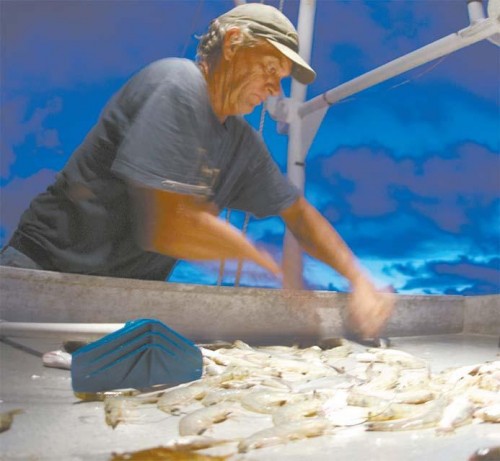
Edna Stewart
March 15, 2011
Is Our Seafood Safe?
March 17, 2011Buried in a 1994 law is a tax exemption that, so far, has cost financially strapped Louisiana more than $220 million from the natural gas bounty of the Haynesville Shale formation in its northwestern parishes.
But as Louisiana faces a $1.6 billion budget shortfall – and with the governor looking at raising college tuition, selling prisons and other cost-cutting measures – legislative leaders say there is little chance of changing the severance tax exemption even though acceleration of Haynesville production is costing the state millions of dollars in lost revenue.
An industry analyst says tax exemptions to encourage shale drilling have lost their luster as drillers turn to $100-a-barrel oil. But Louisiana may be stuck with it because to dump the exemption could worsen an expected slowdown in gas activity.
House Speaker Jim Tucker, R-Terrytown, said he doesn’t expect any changes when the Legislature convenes for its regular session in April.
“There seems to be something there that ought to be reviewed in the context that it’s in, but I don’t see anything happening this year,” said Tucker.
Gas prices are treading around $4 per thousand cubic feet with markets glutted by shale production across the United States, including from the Haynesville formation, which has estimated reserves of 39 trillion cubic feet of gas.
“If natural gas were at $13 we wouldn’t be having this discussion. At $4 gas, without that exemption, the economics of the Haynesville Shale are very difficult,” said Don Briggs, head of the Louisiana Oil & Gas Association, a trade group.
And if natural gas was at $13, the state’s budget hole wouldn’t be as large.
According to the state revenue department, the exemption cut gas severance taxes by $191.6 million in the state’s 2009-10 state fiscal year. In 2008-09, the state lost $29.9 million. The figures were $1.8 million for 2007-08 and $582,326 for 2006-07 when Haynesville activity first kicked in.
Funding for public colleges, social services and health-care programs is expected to figure in the governor’s budget recommendations.
Higher education has been slashed by $310 million, or about 18 percent, in the past two years. Nearly one-third of academic programs at public college campuses are targeted for possible elimination.
If $191 million were dedicated to the state’s Medicaid health programs for the poor and uninsured, it could garner up to an additional $382 million in federal funds.
The exemption covers a technique used in shale gas production known as horizontal drilling. Crews drill horizontally into the rock, then pump in water, sand and chemicals to crack the shale and allow gas to flow up. The 1994 law, passed when horizontal drilling was a relatively new technique, gives a full exemption from severance taxes on all production for two years, or until the well cost is paid, whichever comes first.
Various industry estimates place costs at $5 million to $12 million per well.
One industry group, Louisiana Mid-Continent Oil and Gas Association, warns repealing the exemption would drive drilling into neighboring states with shale formations.
“The problem is that we’re not the only game in town,” said LMOGA head Chris John.
Louisiana’s severance tax changes annually under a complicated formula based on gas prices. Currently, it’s 16.4 cents per thousand cubic feet – down from 33.1 cents the previous year when prices were higher.
Texas has a severance tax of 7.5 percent of market value. Although there are no specific exemptions for horizontal drilling, some are available for wells classified as “high cost.” Arkansas levies a 5 percent tax, with exemptions to allow companies to cover well costs, though none specifically cover horizontal drilling. Oklahoma has a 7 percent tax with no specific shale exemptions.
The only major gas producing state without a severance tax, Pennsylvania, recently killed an attempt to impose one. Pennsylvania is the center of the huge Marsellus Shale, a multistate formation with an estimated 30 to 50 trillion cubic feet of gas. Attempts are under way in Arkansas to use a ballot initiative to raise that state’s tax to 7 percent.
Rehan Rashid, energy analyst with FBR Capital Markets, said incentives aren’t needed any longer to encourage horizontal drilling. But with more drilling equipment headed for potential oil finds, thus driving up costs, and margins for gas producers are tight, he said.
Louisiana’s severance tax is “meaningful enough to change the economics” of Haynesville if the exemption was repealed, Rashid said. He expects Haynesville drilling to be cut in half – even with the exemption – and repeal should wait for higher gas prices.
FBR expects an average gas price of around $5.50 in 2012 as exploration is cut back, Rashid said. During the short history of Haynesville production, prices peaked near $14 in early 2008 before falling to their current level.
Even before oil skyrocketed, one of the major Haynesville players and best known for its natural gas business, Chesapeake Energy Corp., said it would be moving aggressively into the hunt for oil and natural gas liquids, which are derived from oil production.
Then there’s the question of how much the state gets from Haynesville by economic measures other than the severance tax.
According to a study paid for by LMOCA and performed by retired Louisiana State University economist Loren Scott, Haynesville has created more than 4,200 direct jobs and boosted local sales tax collections, in some cases, by more than 200 percent. Scott’s study also projects gas producers pay more than $629 million in royalty payments to land owners – including local governments – over the next four years.
“We wouldn’t have that income tax and those sales taxes if we didn’t have the shale,” said state Sen. Robert Adley, R-Benton, vice chairman of the Senate Revenue and Fiscal Affairs Committee and a strong exemption backer. “You’ve got shale in Texas, Louisiana, Pennsylvania and Canada and popping up in all other places. They are going to develop that shale first where it’s the cheapest.”
– AP correspondent Melinda Deslatte in Baton Rouge contributed to this report.










